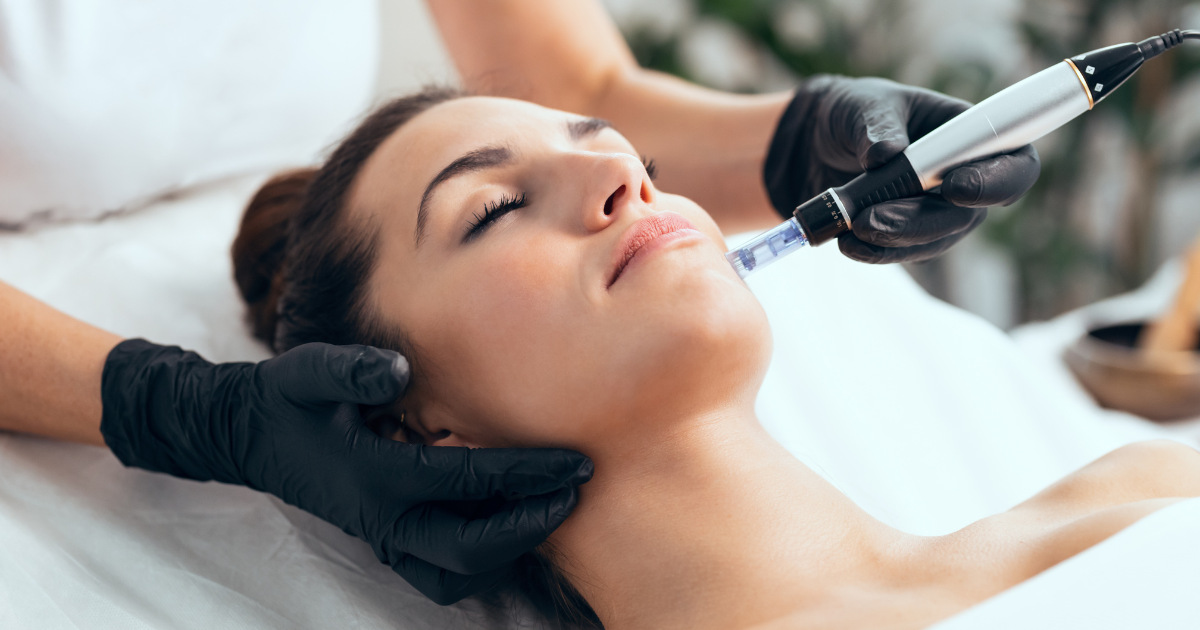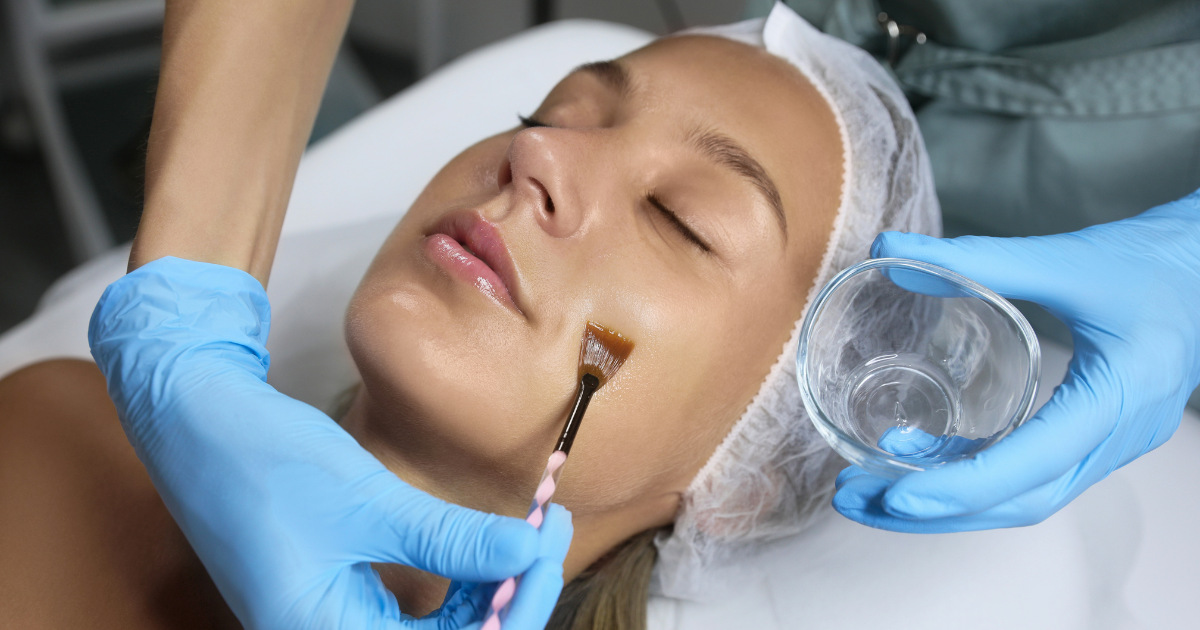
Erase Sun Damage with the Best Melasma Treatments: 2025’s Must-Try Skin Secrets!
Do you have splotches of brown- or gray-colored skin on your face? If so, you may have a fairly common skin condition called melasma. Fortunately, the condition isn’t dangerous or contagious. But it can cause diminished self-esteem and embarrassment. If you think you have this condition, you probably want to know the best melasma treatment.
Fortunately, you can choose from several great treatment options. They include noninvasive aesthetic treatments and natural remedies. Here are a few things to know about melasma, its causes, and the best treatments available.
What Is Melasma?

Melasma causes patches of discoloration on the skin. In some cases, it can occur on the jawline, neck, arms, or other parts of the body. However, most people get it on their faces. The most common areas impacted by melasma include the chin, cheeks, forehead, upper lip, and nose bridge. Depending on its underlying cause, melasma can be a permanent or temporary skin condition.
As with many other skin conditions, melasma ranges in severity. Some may have so few discolored spots that the condition is barely noticeable. Others may have significant areas of discolored skin on their face. Whether your condition is mild or severe, it’s natural to want to minimize it with treatment. Keep reading to learn more about the best treatment for facial melasma.
What Causes Melasma?
Many factors can lead to melasma development, including pregnancy. Research shows that anywhere between 15% and 50% of pregnant women experience melasma. Usually, the condition clears up after the affected person delivers the baby. Other risk factors include:
- Excessive sunlight exposure
- Genetic influences (if you have a family history of the condition, you’re more likely to develop it)
- Sex (females are more likely than males to get melasma)
- Hormones and oral contraceptives
- Skin color (people with light-brown skin types have a higher risk of developing the condition)
Some of the above risk factors are not controllable. You can’t change your genetics or your skin color, for example. However, you can reduce your likelihood of developing melasma and other skin discoloration by limiting unprotected exposure to sunlight. You can also apply melasma treatment cream or receive other procedures to help minimize the appearance of hyperpigmentation.
Symptoms of Melasma

Melasma doesn’t cause pain or itchiness. It also doesn’t cause raised or red patches of skin. Therefore, you likely have a rash or other skin condition if you have any of these symptoms. Here are some of the top signs you may have melasma:
- Non-raised patches of gray or brown skin on your face that typically look darker than your natural skin color
- Spots usually develop on both sides of the face or the center of the face (along the upper lip, nose bridge, and chin)
- Small patches of discoloration can connect to form large areas of discoloration
- Melasma patches tend to become more noticeable after spending time in the sun
If you have any of the above symptoms, getting an official diagnosis is a good idea. Then, you can pursue treatment for melasma to improve your skin tone. Since melasma isn’t a harmful condition, most insurance companies won’t cover the cost of treatment. However, many people decide it’s worth paying out of pocket for treatments that help beautify their complexion and boost their confidence.
The Best Melasma Treatments to Try in 2025
Aesthetic procedures can reduce hyperpigmentation and help your skin coloring appear smoother and more even. Here are some exceptional treatments if you’ve been dealing with melasma for years or have only recently developed it.
MOXI Laser

If you want a melasma laser treatment, consider MOXI laser treatment. It involves resurfacing the skin using a non-ablative fractionated laser. The treatment also harnesses the rejuvenating power of stem cells to promote the growth of new cells. The world-class laser drastically reduces unwanted skin pigments and irregularities. It also encourages collagen production for stronger, more elastic skin. Finally, the MOXI laser stimulates the body to heal by generating healthy, new skin cells to replace the old. This results in a fresher, more youthful-looking complexion.
Besides all of these impressive benefits, the MOXI laser is also noninvasive. That means it doesn’t cause any scarring. This laser treatment also requires minimal post-treatment downtime so you can get back to your normal routine as quickly as possible.
Microneedling

Many people with skin discoloration issues turn to microneedling because it’s quick, effective, and provides rapid results. Microneedling is growing in popularity as science continues to reveal its remarkable benefits for melasma and other skin conditions.
Microneedling treatments intentionally create tiny wounds in your skin using thin, sterile needles. Don’t worry – the wounds aren’t large enough to leave noticeable scars. Instead, they’re tiny punctures that heal quickly after treatment. The needles create small channels in the skin through which your provider can deliver melasma medications.
The purpose of creating micro-wounds in the skin is to stimulate the body’s healing processes. The body sends more blood and nutrients to the targeted area in response to the tiny injuries. The wounds also function as tiny micro-channels through which melasma medications can travel directly to the deeper layers of skin.
Microneedling also encourages the body to make more collagen and elastin and deliver them to the treatment site. For all these reasons, many people think microneedling is the best treatment for melasma.
Chemical Peels

A chemical peel is an exfoliating treatment that removes rough, hyperpigmented cells from the skin’s surface. This action reveals the vibrant, healthy skin cells underneath. Chemical peels come in various types and concentrations. Some formulas reduce the appearance of blemishes and wrinkles. Others help correct uneven skin tone due to melasma and other conditions.
It’s important to receive chemical peels only from skincare professionals qualified to administer them. Low-quality formulas designed for at-home use can be ineffective and yield disappointing results. Even worse, they could damage or injure your delicate facial skin. To find a provider nearby, search for “chemical peel melasma treatment near me.”
Natural Melasma Treatments and Prevention Tips
Besides scheduling leading-edge aesthetic treatments, there are other ways to promote healthy, even-toned skin. Here are some natural melasma treatment options and prevention tips.
Wear Sun Protection

Excess sun exposure is notoriously bad for hyperpigmented skin. One of the best ways to promote a more even skin tone is by wearing sun protection anytime outdoors. Wear a ball cap or wide-brimmed sunhat whenever you go outside. You should also apply sunscreen with zinc oxide to any exposed skin. Zinc oxide is a white powder made from zinc and oxygen. It can block UV rays from the sun, which is known to harm the skin.
If you have melasma, staying out of the sun during peak hours is also wise. These are the hours when sunlight is strongest and most intense. You’ll need to look up peak sun hours in your area because they vary based on geographic location and time of the year.
Take the Right Vitamins

Some vitamins may reduce melasma by promoting healthy skin in general. Some of the best vitamins for melasma treatment include:
- Vitamin A: This vitamin helps maintain and form healthy skin. Retinoids (derived from vitamin A) are also a common topical melasma treatment. However, it’s important to use topical retinoid products as directed to avoid further skin irritation.
- Vitamin D: Research hints at a link between vitamin D deficiency and melasma. Vitamin D is essential for skin health. Therefore, if you aren’t getting enough of it from your diet, you may need to take a supplement.
- Vitamin C: There aren’t enough studies to confirm the efficacy of vitamin C as a standalone melasma natural treatment. However, the limited information available shows that vitamin C may improve skin discoloration and overall skin health.
Zinc, resveratrol, licorice extract, and glutathione are also under investigation to determine whether they can improve melasma.
Avoid Using Harsh Products on Your Skin

Certain cosmetics, exfoliants, and other products contain chemicals that can worsen melasma. When selecting products to put on your skin, be selective. Avoid anything that includes sulfates, alcohol, parabens, or formaldehyde in the ingredients list. Keeping your face moisturized is also important, since hydrated skin tends to be healthier and more radiant than dehydrated skin.
Minimize Melasma With Professional Aesthetic Treatments
Living with melasma can be difficult, but it becomes easier when you find the best treatment for your situation. Here at Sante Medspa, we can help you select the ideal treatment for your skin type and aesthetic goals. We can also answer any questions you may have about your treatment candidacy, melasma laser treatment cost, or other related questions. Contact us today to schedule your MOXI laser, microneedling, or chemical peel appointment.

"*" indicates required fields
By submitting this form you agree to be contacted via phone/text/email.
Reply ‘STOP’ to opt-out of marketing at any time*

